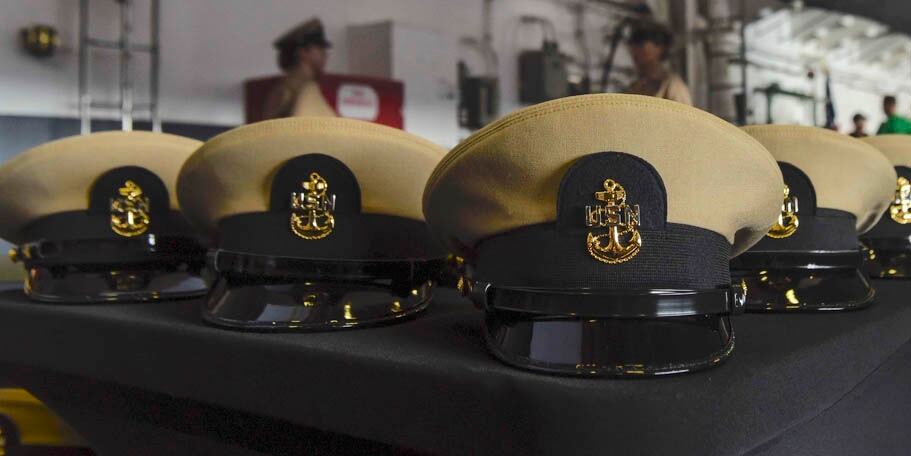The Navy will forcibly retire 33 officers at the ranks of captain and commander by Sept. 1, based on the recommendations of two selective early retirement boards held last fall.
Sifting through the records of 2,136 eligible officers, 41 separate panels looked for misconduct or signs of declining performance, with 33 commissioned officers failing to make the cut.
That’s roughly 1.5 percent of the personnel eligible for mandatory retirement.
There’s no public announcement of the boards’ results. Instead, on Feb. 27 commands were provided the names of those who will not continue in service and they will handle the formal notification process.
“The FY19 [Selective Early Retirement] boards identified and selected for early retirement only those senior O-5s and O-6s who were under performing, which was expected to be a small number,” said Rear Adm. Jeff Hughes, the deputy Chief of Naval Personnel, in a written statement to Navy Times.
RELATED

According to Hughes, who also helms Navy Personnel Command, the purpose of the panels “was not to remove excess officers from the inventory" and there was “no required selection quota.”
The O-5 panels reviewed a total of 531 line and 270 staff commanders, selecting 11 and six officers respectively for mandatory retirement.
At the O-6 level, 776 line and 559 staff captains were reviewed and the panels marked nine and seven officers respectively for mandatory retirement.
The boards were announce in August by Vice Adm. Bob Burke, the Navy’s top uniformed personnel officer. They were modeled on the Senior Enlisted Continuation Board, which makes a pure quality cut without mandating quotas for removal.
Unlike the board for senior enlisted leaders, however, the Navy needed Congress to tweak legislation to weed out commissioned officers.
Lawmakers granted that authorization to the Navy in the 2018 defense spending bill, Hughes said.
RELATED

Under the new law, service secretaries can request permission from the Secretary of Defense to review any officers in the O-5 ranks with at least one failure of selection or any O-6s who have served in grade for at least two years without being recommended for promotion.
“We tightened those parameters for the FY19 SER boards to consider O-6s with three years time in grade and O-5s who have failed to select two or more times,” Hughes said.
All officers reviewed by the board have at least 20 years of active service and are eligible to retire and collect a pension.
By law, the officers are given seven months from the time the board’s results were officially approved to retire, which is why the service set Sept. 1 as the official deadline for them to exit the Navy.
Mark D. Faram is a former reporter for Navy Times. He was a senior writer covering personnel, cultural and historical issues. A nine-year active duty Navy veteran, Faram served from 1978 to 1987 as a Navy Diver and photographer.





